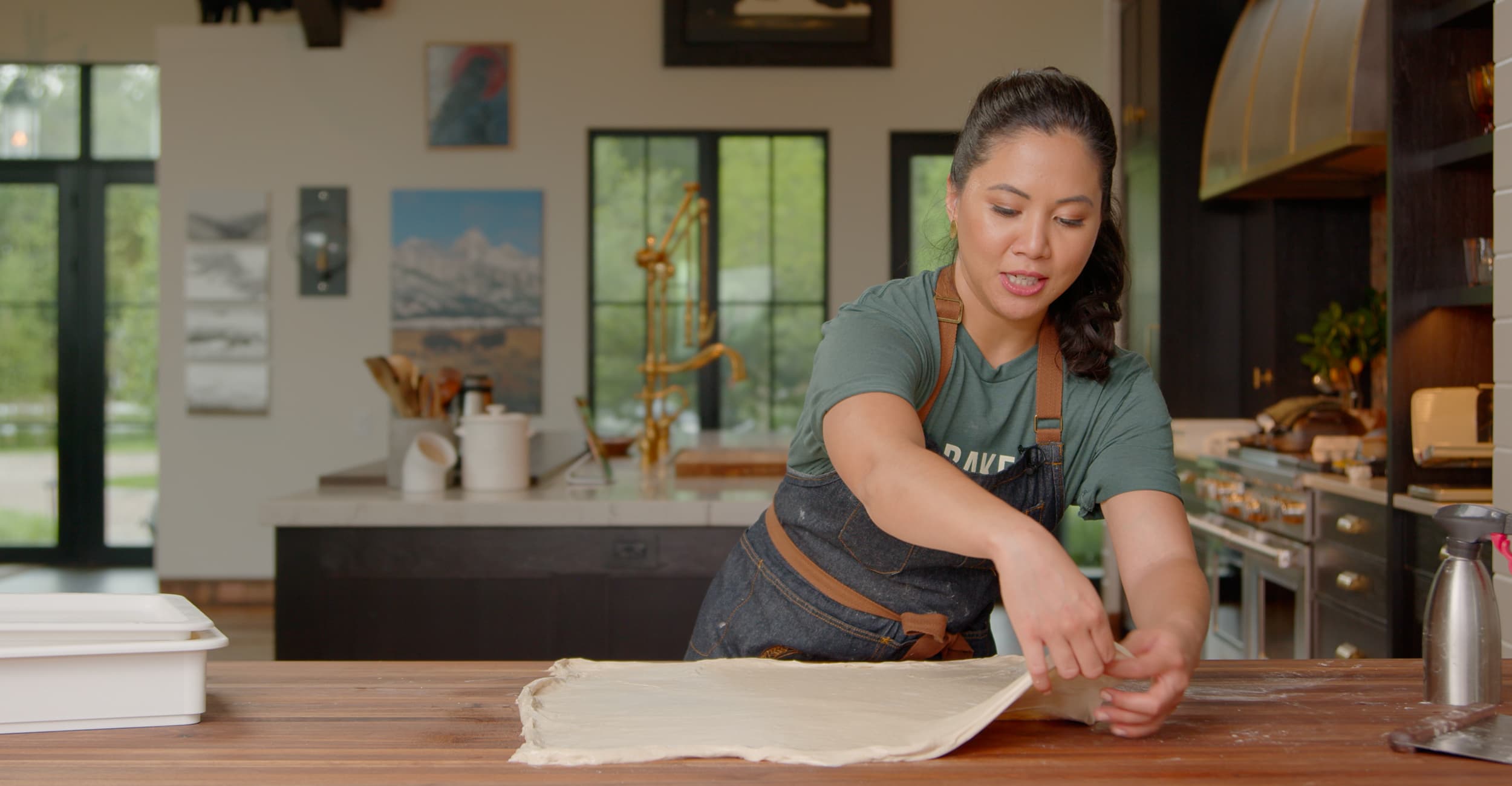
Batard Scoring
Your dough is ready to score! Grab your curved lame and follow along as Greg Wade demonstrates his best tips for scoring a batard, including tools and technique, blade angle, dough prep, and three different scoring patterns.
Table of Contents
- Where to start
- What scores work best
- Five tips for scoring a better batard
- Three scoring patterns you might like
Related Posts
Batard Shaping
Boule Shaping
Spotting Scoring Mistakes
Please email us at
techniques@challengerbreadware.com with your
comments and questions.
Where to start
First things first, you need the right tool for the job. We recommend using a curved lame for scoring batards. A curved lame will help you best achieve the beautiful ear and create a nice shelf during the baking process. Yes, there is opportunity for ear formation, and beautiful bloom, but the success of your score shouldn’t be measured by the size of the ear… unless that’s your goal, then go for it. To us, the goal is to maintain the loaf’s shape, and give that steam just enough space to allow your dough to eloquently rise. So, a nice balanced score will do the trick.
What scores work best?
When scoring, you want to choose a pattern that will accentuate the shape of your loaf. In this case, we love the classic single score. It’s simple, yet effective and it creates the beautiful ear that we all love! You’ll want to ensure that you score the length of the dough, and to the depth of the lame stick (the metal stick that holds the curved blade in place), or about 1/4″ / 6mm. The depth of your score, along with the angle at which you score, are crucial to the bloom and ear formation. Too deep, and you won’t get an ear, too sharp of an angle and you won’t get much rise and bloom. It’s nice to start with a simple single score to understand how your technique is affecting the finished product. If you’re looking for a few different scoring options, check out the video below that details single, double, and triple scores for batards.
Looking to troubleshoot your scores? Check out our post on Spotting Scoring Mistakes.
Five tips for scoring a better batard
- Use a curved lame so that the curvature pushes the base down and the top cut part up.
- Score with the blade at a 22° angle, as shown in the video above.
- Use your freehand to create a little tensile strength.
- Pierce the dough with the tip of the blade.
- Use the lame stick to know that you’ve got the proper depth.
Three scoring patterns you might like
What do you do when you want enhanced flavor and texture in your bakes, but don’t have a sourdough starter ready to go? Make a poolish!
- Feb 08, 2023
- 2 min read
The 10” fold is our own, Jim Challenger’s simple way to build gluten from inside the Proofing Box.
- Mar 20, 2023
- 2 min read + video
The lamination method is a way to build strength and structure in dough.
- Mar 20, 2023
- 2 min read + video



